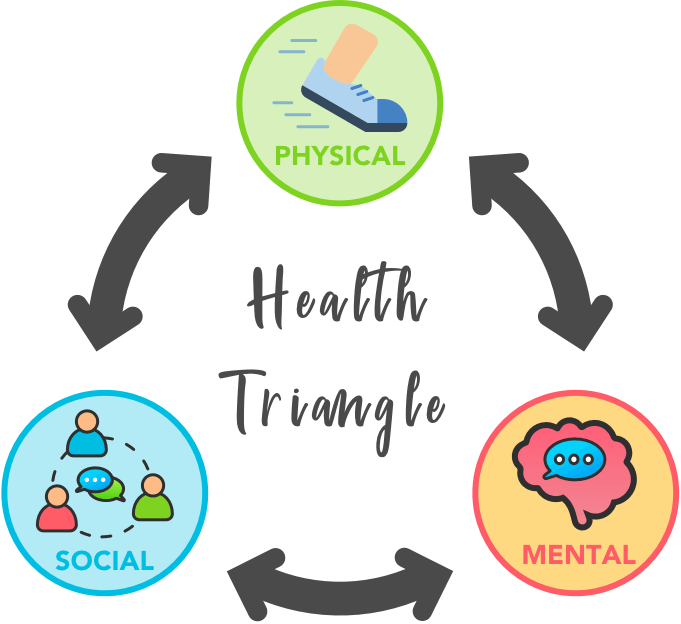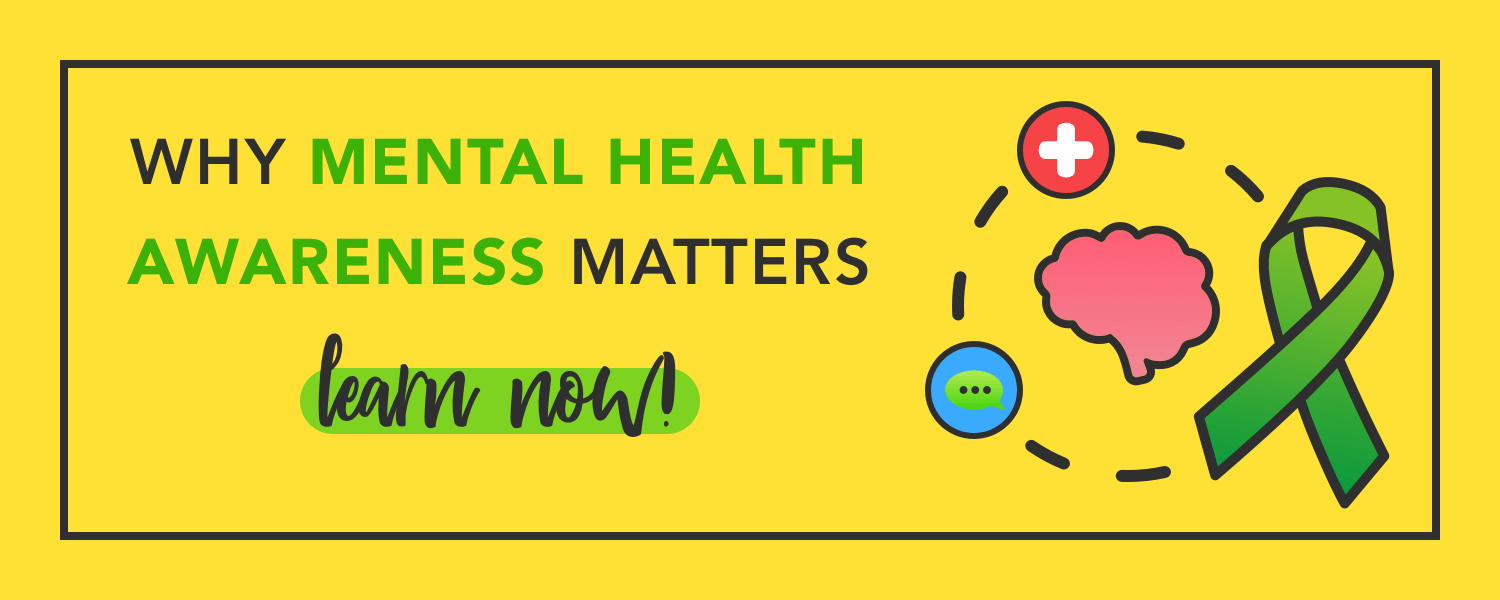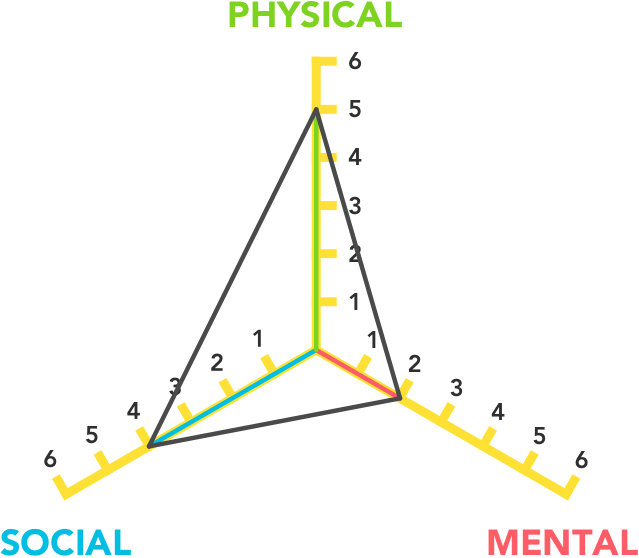What is The Health Triangle and Why Does it Need to Be Balanced
The health triangle is a measure of your overall health. There are three sides to the health triangle.
Most people could name maybe one or two sides of the health triangle. Can you name all three sides?
If not, here is why you should pay attention to the health triangle and why all three sides need to be balanced to achieve overall wellness.
What is The Health Triangle
The health triangle, also known as the wellness triangle, is a measure of our body’s overall wellbeing. It is a representation of your body’s efficiency and balance.
The health triangle consists of three sides that contribute to your overall wellness. When you are at the optimal state, all three are in a balanced state and your body is at it’s most efficient.
What are the Three Sides of the Health Triangle
The three sides that make up the health triangle and contribute to your overall health are:
Physical Health
Mental Health
Social Health
Most people have heard of physical health, some may even be aware of mental health, but are you also aware there is social health.
Growing up, I only ever heard of physical health. Whether it was in school or at home. I was only taught that nutrition, exercise, and sleep were the priorities of maintaining our health.
Sometimes I would hear a little about mental health, but it was something that never really stuck and social health was something completely new to me.
What is Physical Health
Physical Health deals with your body’s ability to function normally and how well it is operating.
This includes your diet and nutrition, getting enough physical activity or exercise, and enough sleep to recharge for the next day.
Other things that you may not realize such as your hygiene; this includes taking care of your teeth, keeping your body and hair clean are all important to your physical health.
What is Mental Health
Mental Health focuses on your thoughts, feelings, and emotions. Stress, anxiety, and emotions such as anger are all encompassed under mental health. It is your ability to cope with stress and problems that are a normal part of life.
Accepting who you are and being positive about it is also an important part of your mental health. Being aware of your thoughts, feelings, and behavior allow you to be healthy mentally.
Mental health enables you to learn and develop new skills. The development of skills, behaviors, and knowledge helps you grow as an individual. Learning increases self-confidence, awareness, and self-perception.
Check out this great article if you would like to learn more about why mental health is so important and how it affects you.
What is Social Health
Social Health encompasses our relationships with others. Whether that is family, friends or peers, and coworkers. Social health measures the way a person reacts to people in their environment.
It includes how they can communicate, care for others, seek and lend support, and the ability to make and keep relationships. These relationships could occur at home, school, work, or social gatherings.
Why is the Health Triangle Important
The health triangle is a measurement of your overall health. Each of the three components contributes to your overall wellbeing and need to be equally balanced.
All three sides of the health triangle are interlinked. If one is out of balance the other two will also be affected. For this reason, those with chronic health issues are at greater risk of developing mental health problems like anxiety and depression.
If you thought physical health was the only thing that mattered, you are not alone. I am certainly guilty of this as well. Focusing only on nutrition and exercise is what we learned to stay healthy, either from school or the media.
But mental and social health have equally an important impact on your overall health. Neglecting any of the three aspects of health can impact the other two states.
How Can Your Health Triangle Become Unbalanced
Think of the health triangle as a structure. It is supported by three sides: physical, mental, and social health. If the health triangle is balanced, the three sides are equal and the structure maintains a proper triangular form.
When one of the sides of the triangle becomes weakened, the overall structure becomes unstable. So when you neglect one aspect of the health triangle, that side becomes weakened.
When one side becomes neglected and weakened, you are at a higher risk of experiencing health issues in the other two states.
To ensure our health triangle doesn’t become unbalanced we need to focus on improving all three aspects of health, not just one or two. By ensuring we do activities that benefit all three will help us achieve overall wellness.
What Affects Your Health Triangle
There are many determinants of health. Some are out of your control such as genetics. Some are in your control such as your behavior.
Don’t get caught up with the ones that you have no control over. Focus on what you can control to promote your health. Here is a list of the determinants of health:
1. Biology and Genetics
inherited conditions is a fundamental determinant of health and can define an individual’s biological responses throughout their life
age and gender inequality can lead to income disparities and differential access to health care
2. Environment
access to health care and other health services
access to nutritious food and clean water
acceptable living conditions
having a stable financial income to meet your needs
3. Attitude
attitudes to illness, pain, and misfortune
perception of diet, body image, and beliefs
4. Behavior
practicing personal self-care
eating a healthy diet regularly
getting consistent physical activity
avoiding high-risk activities such as smoking and alcohol consumption
5. Technology
fitness trackers can provide insight and motivate you to be more active
overuse of technology can cause eyestrain (headaches and dry eyes)
sleep problems and other mental health issues can be caused by the use of electronic devices
6. Social Support Network
support of family and friends
local support programs
Health Triangle Assessment
The health triangle assessment will evaluate each aspect of the health triangle (physical, mental, and social). This will allow you to identify which areas you are lacking and which areas you are doing well.
Health Triangle Self Assessment Worksheet
Before you get started with the assessment, print a free copy of the Health Triangle Worksheet to perform this exercise.
This assessment will allow you to analyze your personal health triangle and each of the aspects that contribute to your overall health.
1. Assess Your Health
Assess each of the aspects of your health triangle by answering Yes or No to each of the questions.
Physical
I get seven to nine hours of sleep each night
I eat a well-balanced diet, which includes a healthy breakfast
I keep my body, teeth, and hair clean daily
I do at least 30 minutes of some form of physical activity each day
I avoid the use of tobacco, alcohol, and other drugs
I see a doctor and dentist for regular checkups
Mental
I generally feel good about myself and accept who I am
I can express my feelings clearly and calmly, even when angry or sad
I accept constructive criticism
I have at least one activity that I enjoy doing by myself
I have awareness of my thoughts, emotions, and behavior
I like to learn, think about new things and develop new skills
Social
I have at least one close friend that I keep in contact with regularly
I show respect and care for my family and friends
I know how to disagree with others without getting angry
I am a good listener and able to communicate clearly with others
I get support from others when I need it
I say no if people ask me to do something I feel uncomfortable with
Count the total number of times you answered “Yes” for each aspect of the health triangle. This number represents your score for that aspect.
2. Illustrate Your Health Triangle
You can illustrate your health triangle based on the score. If you received a score of 5 for physical, draw a line up till 5 on the physical side.
Repeat this for each side of the health triangle. Once all 3 lines have been drawn, draw a triangle connecting the end of each line to make the health triangle.
Your health triangle should look something like this:
3. Analyze Your Results
Reflect on your triangle and describe what your overall health looks like based on the results. Think about and comment on the following:
Does your health triangle have equal sides?
Is there one area you are strong in?
Is there an area you need to improve on?
4. Strengths and Weaknesses
Strengths
List your strengths in each area of the health triangle. Reflect on the top strengths you have based on how you perceive yourself and on the results of the health triangle.
Identify how you can continue to maintain each of those strengths. Think about things you are already doing well or enjoy doing.
Weaknesses
List your weaknesses in each area of the health triangle. What areas do you feel you need to improve on or would like to work on? Identify what you can do to improve on each of those weaknesses.
If you have difficulty coming up with ways to maintain or improve each aspect, take a look at the next section where we discuss many ways to maintain a balanced health triangle.
How to Maintain a Balanced Health Triangle
After identifying where you are lacking from the health triangle assessment, focus on the area which needs the most improvement.
Each of the three sides is equally important in maintaining an overall healthy lifestyle and balanced health triangle.
If you have only been focusing on your physical wellbeing, consider improving your mental and social wellbeing as well.
Maintain Physical Health
There are various aspects to maintaining your physical health. This includes nutrition and diet, physical activity, hygiene, and even sleep. Here are some examples of how you can improve your physical health:
Nutrition and Diet
Having a proper healthy diet is important for energy and growth. This keeps your immune system strong so you’re less likely to get sick.
Stay Hydrated
Women need 9-12 cups of fluids, men need 11-15 cups daily. Staying hydrated keeps your body functioning properly and helps improve sleep quality.
Hydration also helps regulate body temperature, keeps you calm, cleanses your body fluids of toxins, and regulates mood.
Exercise
Regular physical activity is important to maintain a healthy lifestyle. 30 minutes of daily exercise is recommended. It doesn’t need to be an intense workout, simply going for a walk is beneficial.
Also, try to incorporate physical movement throughout your day. Taking regular breaks to get up from your desk and walking to get a drink or go to the washroom goes a long way.
Sleep
Sleeping 7-9 hours every night will give your body the rest it needs. Going to bed and waking up the same time every day can maintain good sleeping habits.
Avoid activities that would keep you up before your bedtime, such as using electronic devices.
Showering
Showering and washing your hands helps to ensure proper hygiene. It helps to keep your body clean and less likely to spread germs.
Brushing Your Teeth
Brush and floss twice a day to preserve your dental health. This helps maintain your oral hygiene and prevent gum disease.
Skincare
Take care of your skin by using sunscreen if you’re outdoors. Sunscreen helps protect your skin, lowers the risk of skin cancer, and prevents premature aging.
Doctor Checkups
Regular checkups to the doctor help to ensure you are in good health. The doctor will usually monitor blood pressure, physical checks, or any other signs of good health.
Maintain Mental Health
Stress from school, work, or relationships can contribute to poor mental health. Therefore, it is important to learn healthy ways to cope with stress. Here are some examples of how to strengthen your mental health:
Treat Mental Illnesses Seriously
Treating mental illnesses like physical illnesses is important. Ask friends and family for help or seek out professional help if necessary.
Build Resilience
Build resilience by prioritizing connections, foster healthy self-esteem, and reducing shame.
Practice Self-Care
Build awareness of your thoughts and emotions, practice self-care by regulating your emotions and behaviors.
This can include journaling your thoughts, working through your emotions by talking about it, and challenging stressful or anxious situations.
Practice Mindfulness
Practicing mindfulness can help calm and focus your thoughts. By building awareness, being more open and accepting, and being present in the moment results in a more positive mindset.
Increase Happiness
Tap into one of the four happiness chemicals by engaging in hobbies and things you enjoy.
Spending time outside, doing something creative, or just listening to music are just a few examples.
Physical Activity
Exercise not only has physical benefits but can also alleviate stress, anxiety, and any built-up tension.
Activities such as yoga, stretching, or your favorite physical activity can be beneficial.
Build a Support Network
Build a positive support network of friends and family that can support, guide, or just enjoy life with.
Maintain Social Health
Families should work together to eliminate stress and negativity. Strong supportive friendships will increase happiness, self-esteem, and reduces stress. Here are some examples of how to strengthen your social health:
Build a Support Network
Building a positive support network of friends and family. Having a relationship that is supportive, loving, responsible, and balanced can contribute to your social health.
Bond Over Common Interest
Bond with people by joining a club or community over a common interest or hobby. Building relationships with those who enjoy similar interests is a great way to socialize.
Social Events
Say yes when invited to social events or initiate an invitation to your friends and family. Socializing can help build confidence and protect you against the effects of stress.
Volunteering
Get involved within the community by volunteering. Volunteering helps you connect with the community, build relationships, positive for your mind and body, and could open new career opportunities.
Start Maintaining Your Health Triangle
To recap, the health triangle consists of three sides:
Physical Health: Your bodies ability to function normally
Mental Health: Your ability to manage thoughts, emotions, and behaviors
Social Health: Our relationships and how we communicate with those around us
Start maintaining your health triangle with the following steps:
Perform health triangle assessment with the printable worksheet
Identify areas of the health triangle you are lacking and doing well
Identify a few ways to maintain the aspects of the health triangle you are doing well
Identify a few ways to improve the aspects you are lacking in
Continue to maintain those aspects regularly
If you’re looking through this list and overwhelmed by the amount of effort required to maintain all three aspects, you are not alone. Consider combining activities to promote two or three aspects at the same time.
For example, if you enjoy running, consider joining a running club. You’ll be able to socialize with others that have a common interest while maintaining your physical and mental health as well.
Here are a few great articles on mental health to get you started. Feel free to share this health triangle assessment worksheet with a friend or family so they can perform their own assessment and see the benefits as well.







